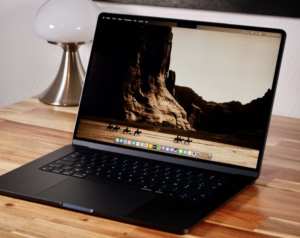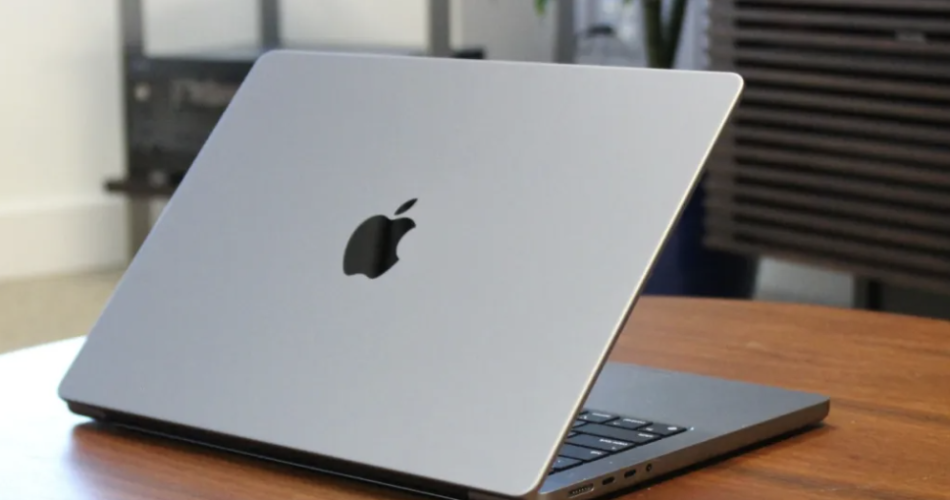Macs, and specifically MacBooks, have long been the go-to choice for many professionals, creatives, and tech-savvy individuals. With their sleek design, powerful performance, and seamless integration with the Apple ecosystem, MacBooks offer a unique computing experience that sets them apart from their Windows-based counterparts. From the reliable and portable MacBook Air to the high-performance MacBook Pro, Apple’s lineup of laptops caters to a wide range of user needs and preferences.
In this comprehensive guide, we will explore the factors to consider when choosing the perfect MacBook for your specific requirements, helping you make an informed decision and find the laptop that best suits your needs.

MacBook
Contents
- 1 Understanding the MacBook lineup
- 2 Factors to consider when choosing a MacBook
- 3 MacBook Air vs. MacBook Pro: Which one is right for you?
- 4 MacBook specifications and performance
- 5 MacBook accessories and upgrades
- 6 MacBook pricing and budget considerations
- 7 Tips for purchasing a pre-owned MacBook
- 8 Where to buy a MacBook
- 9 Conclusion: Find the perfect MacBook for your needs
Understanding the MacBook lineup
Apple’s MacBook lineup consists of two main models: the MacBook Air and the MacBook Pro. Each model offers a distinct set of features and capabilities, catering to different user needs and preferences.
The MacBook Air is known for its lightweight design, exceptional battery life, and balanced performance. It’s an excellent choice for everyday tasks, such as web browsing, document writing, and light creative work.
On the other hand, the MacBook Pro is designed for power users who demand more from their laptops. With its more powerful processors, dedicated graphics options, and advanced features, the MacBook Pro is well-suited for tasks like video editing, 3D modeling, and intensive software development.
Within each model, there are further variations in terms of screen size, processor options, and other hardware specifications, allowing you to tailor the MacBook to your specific needs.
Factors to consider when choosing a MacBook
When selecting the perfect MacBook, there are several key factors to consider:
- Performance: Assess your computing needs and determine the level of performance you require. Do you need a powerful processor for tasks like video editing or 3D rendering, or will a more balanced CPU suffice for everyday use?
- Display: Consider the screen size, resolution, and display technology (e.g., Retina, OLED) that best suits your needs. If you’ll be working with visual content, a high-quality display is essential.
- Storage and memory: Evaluate your storage requirements, whether you need a spacious solid-state drive (SSD) for fast file access or a larger traditional hard disk drive (HDD) for ample storage space. Additionally, consider the amount of RAM needed for your workflow.
- Portability: If you’re frequently on the go, the lightweight and compact design of the MacBook Air may be a better fit than the slightly heavier MacBook Pro models.
- Battery life: Assess your typical usage patterns and determine how much battery life you’ll need to get through the day without needing to recharge.
- Connectivity: Ensure that the MacBook you choose has the necessary ports and connectivity options, such as Thunderbolt 3/USB-C, HDMI, and Wi-Fi, to support your peripherals and workflow.
- Budget: Establish a realistic budget for your MacBook purchase, taking into account the cost of the laptop, as well as any necessary accessories or upgrades.
By carefully considering these factors, you can narrow down the MacBook options and find the one that best aligns with your specific needs and preferences.
MacBook Air vs. MacBook Pro: Which one is right for you?
When it comes to choosing between the MacBook Air and the MacBook Pro, there are several key differences to consider:
MacBook Air:
- Lightweight and portable design
- Balanced performance for everyday tasks
- Excellent battery life
- More affordable price point
MacBook Pro:
- More powerful processors and graphics options
- Suitable for intensive tasks like video editing and 3D modeling
- Available in multiple screen sizes (13-inch, 14-inch, 16-inch)
- Generally more expensive than the MacBook Air
To determine which model is right for you, consider your specific needs and use cases. If you’re primarily engaged in light to moderate computing tasks, such as web browsing, document writing, and light photo editing, the MacBook Air may be the ideal choice. Its portability and balanced performance make it a great option for on-the-go productivity.
On the other hand, if you require more processing power for tasks like video editing, 3D rendering, or software development, the MacBook Pro is likely the better fit. The increased performance and specialized features of the Pro models make them well-suited for power users and professionals in creative or technical fields.
It’s important to note that within each model, there are various configurations and options available, allowing you to further customize the MacBook to your specific needs and budget.
MacBook specifications and performance
When evaluating the performance of a MacBook, several key specifications come into play:
- Processor (CPU): The central processing unit (CPU) is the brain of the laptop, responsible for executing instructions and powering various applications. MacBooks are available with a range of Intel and Apple’s own M1 and M2 processors, each offering different levels of performance and power efficiency.
- Memory (RAM): The amount of random-access memory (RAM) in a MacBook determines how many applications and tasks it can handle simultaneously. More RAM allows for smoother multitasking and better performance with resource-intensive software.
- Storage: MacBooks can be equipped with solid-state drives (SSDs) or traditional hard disk drives (HDDs). SSDs offer faster data access and boot times, while HDDs provide more affordable storage space.
- Graphics: While the integrated graphics in MacBooks are suitable for everyday tasks, power users may opt for models with dedicated graphics cards, especially if they engage in tasks like video editing, 3D rendering, or gaming.
- Display: The display quality, including resolution, color accuracy, and brightness, can significantly impact the user experience, particularly for tasks that involve visual content creation or media consumption.
By understanding the specific hardware configurations and their corresponding performance characteristics, you can make an informed decision on the MacBook that best meets your computing needs.
MacBook accessories and upgrades
To further enhance the functionality and versatility of your MacBook, a wide range of accessories and upgrades are available:
- External Displays: Connect your MacBook to an external monitor or display to expand your workspace and improve productivity.
- Keyboards and Mice: Upgrade your input devices with ergonomic keyboards and mice for a more comfortable typing and navigation experience.
- Storage Expansion: Add external hard drives or solid-state drives to increase your storage capacity and backup options.
- Docking Stations: Utilize a docking station to connect multiple peripherals, such as displays, external storage, and USB devices, with a single cable.
- Protective Cases and Sleeves: Safeguard your MacBook from scratches, dents, and other physical damage with a high-quality protective case or sleeve.
- Laptop Stands and Cooling Pads: Improve the ergonomics and cooling of your MacBook with adjustable stands and cooling pads.
- Adapters and Dongles: Ensure you have the necessary adapters and dongles to connect your MacBook to various ports and devices, such as HDMI, USB-A, and Ethernet.
By carefully selecting the right accessories and upgrades, you can tailor your MacBook to better suit your specific needs and enhance your overall computing experience.
MacBook pricing and budget considerations
MacBook pricing can vary significantly depending on the model, configuration, and retailer. Here’s a general overview of the pricing ranges:
MacBook Air:
- Starting price: Around $999
- Higher-end configurations: $1,299 to $1,599
MacBook Pro:
- 13-inch model: $1,299 to $1,999
- 14-inch model: $1,999 to $2,499
- 16-inch model: $2,499 to $3,499
When establishing your budget, consider the following factors:
- Performance Needs: Determine the level of performance you require and allocate your budget accordingly. Higher-end configurations with more powerful processors, graphics, and storage will typically cost more.
- Longevity: Investing in a more capable MacBook upfront may provide longer-lasting performance and value, reducing the need for frequent upgrades or replacements.
- Resale Value: MacBooks generally have a high resale value, making them a more sustainable investment compared to some Windows-based laptops.
- Accessories and Upgrades: Factor in the cost of any necessary accessories, such as external displays, docking stations, or storage expansion, to ensure your total budget covers all your needs.
- Financing and Payment Options: Many retailers and Apple itself offer various financing and payment options, such as monthly installments or trade-in programs, to make MacBook purchases more accessible.
By carefully considering your budget and aligning it with your specific computing requirements, you can find the perfect MacBook that strikes the right balance between cost and performance.
Tips for purchasing a pre-owned MacBook
Purchasing a pre-owned or refurbished MacBook can be an excellent way to save money without compromising on quality. Here are some tips to consider when buying a used MacBook:
- Inspect the Condition: Thoroughly examine the MacBook for any physical damage, such as dents, scratches, or a cracked display. Ensure that all ports and features are functioning correctly.
- Check the Battery Health: Assess the battery’s health and remaining lifespan. Aim for a MacBook with a battery that has been well-maintained and has a significant amount of usage time left.
- Verify the Specifications: Confirm the MacBook’s processor, RAM, storage, and other key specifications to ensure they meet your requirements.
- Consider the MacBook’s Age: Newer models will typically have better performance and longer software support, but older models can still be viable options if the price is right.
- Ensure Proper Warranty and Support: Look for a MacBook that comes with a warranty or the option to purchase an extended warranty for added peace of mind.
- Purchase from Reputable Sellers: Buy from trusted sources, such as Apple’s Refurbished and Clearance store or authorized resellers, to minimize the risk of purchasing a device with hidden issues.
By following these tips, you can find a high-quality pre-owned MacBook that fits your budget and meets your computing needs.
Where to buy a MacBook
There are several options for purchasing a new or pre-owned MacBook:
- Apple Retail Stores: Visiting an Apple retail store allows you to see and test the MacBook models in person, as well as receive guidance from knowledgeable sales staff.
- Apple Online Store: The Apple online store offers a wide selection of MacBook models, configurations, and accessories, with the convenience of home delivery.
- Authorized Apple Resellers: Retailers like Best Buy, Amazon, and B&H Photo often carry the latest MacBook models and may offer additional discounts or bundle deals.
- Apple Refurbished and Clearance Store: Apple’s online refurbished and clearance store is an excellent source for pre-owned and discounted MacBook models.
- Third-Party Retailers: Websites like Newegg, B&H Photo, and Adorama may have competitive prices on new and pre-owned MacBook models.
- Used and Secondhand Marketplaces: Platforms like Craigslist, Facebook Marketplace, and eBay can be good sources for finding pre-owned MacBooks, but exercise caution and thoroughly inspect the device before making a purchase.
Regardless of the purchasing channel, be sure to research the seller’s reputation, return policies, and warranty information to ensure a smooth and hassle-free buying experience.
Conclusion: Find the perfect MacBook for your needs
In the ever-evolving world of technology, the MacBook lineup continues to offer a compelling computing experience for a wide range of users. By understanding the key differences between the MacBook Air and MacBook Pro, as well as the various hardware specifications and pricing considerations, you can confidently select the perfect MacBook that aligns with your specific needs and budget.
Ready to find your ideal MacBook? Explore the latest models and configurations on the Apple website or visit your nearest authorized retailer to experience the power and versatility of Apple’s laptops firsthand. Take the first step towards enhancing your computing experience with the perfect MacBook for your needs.
